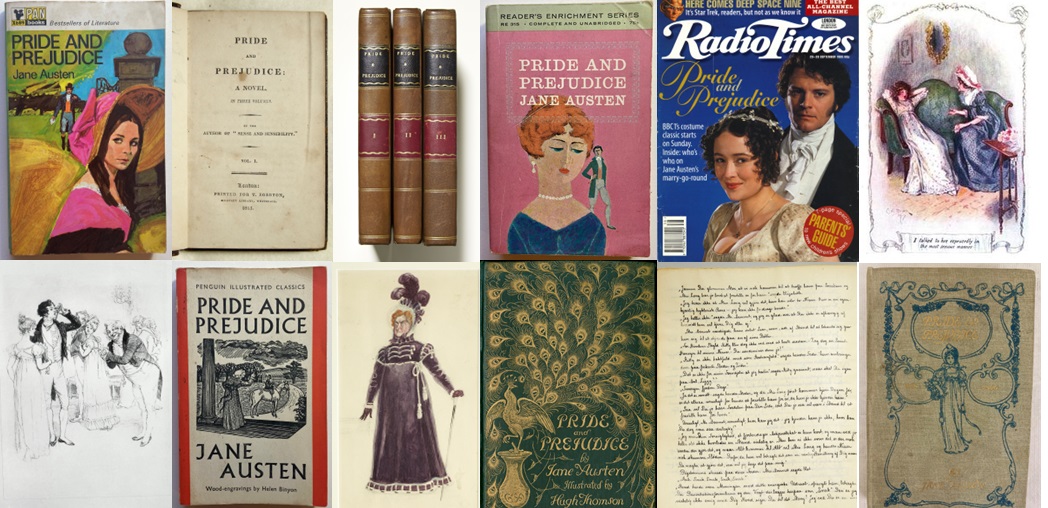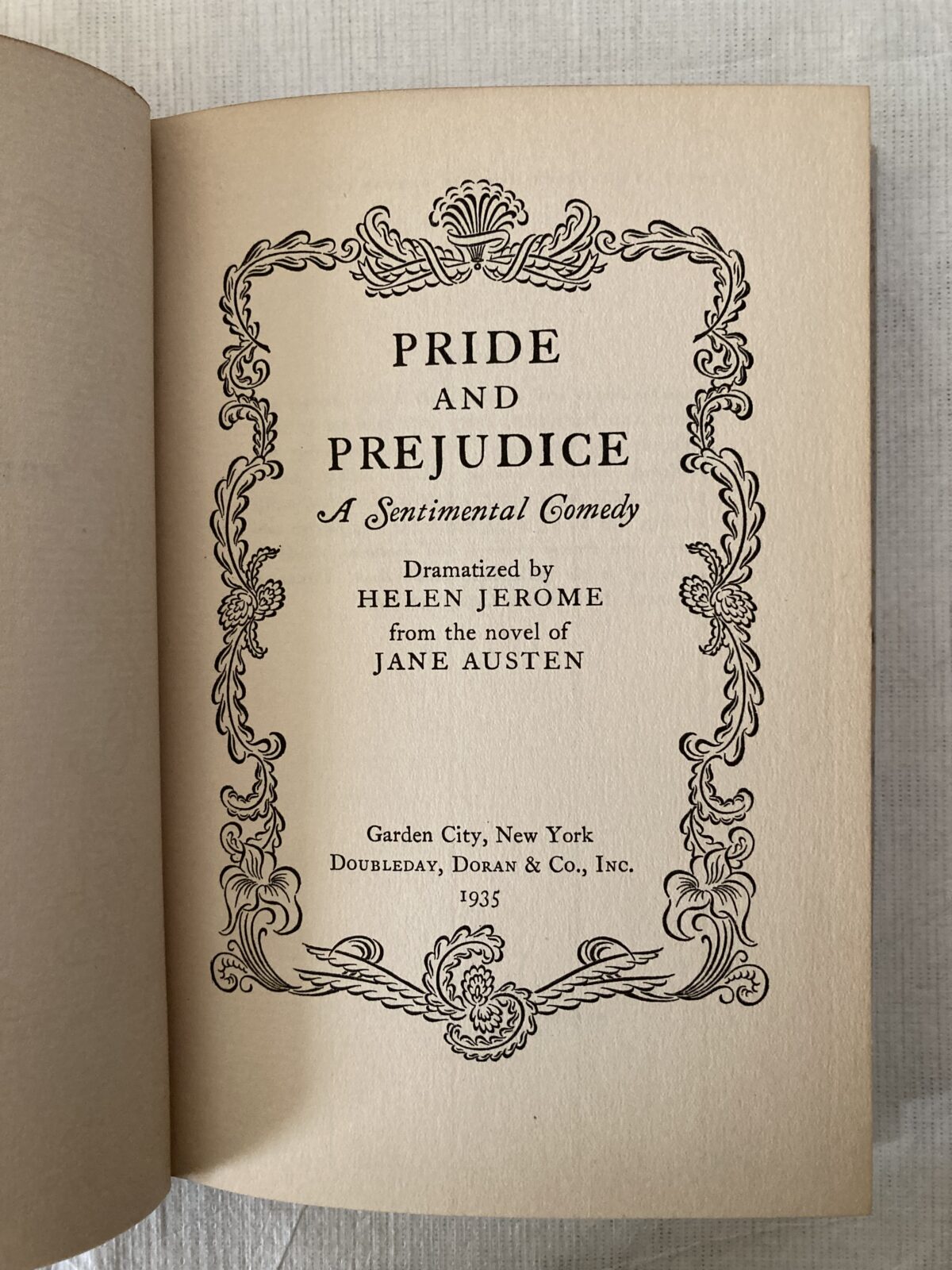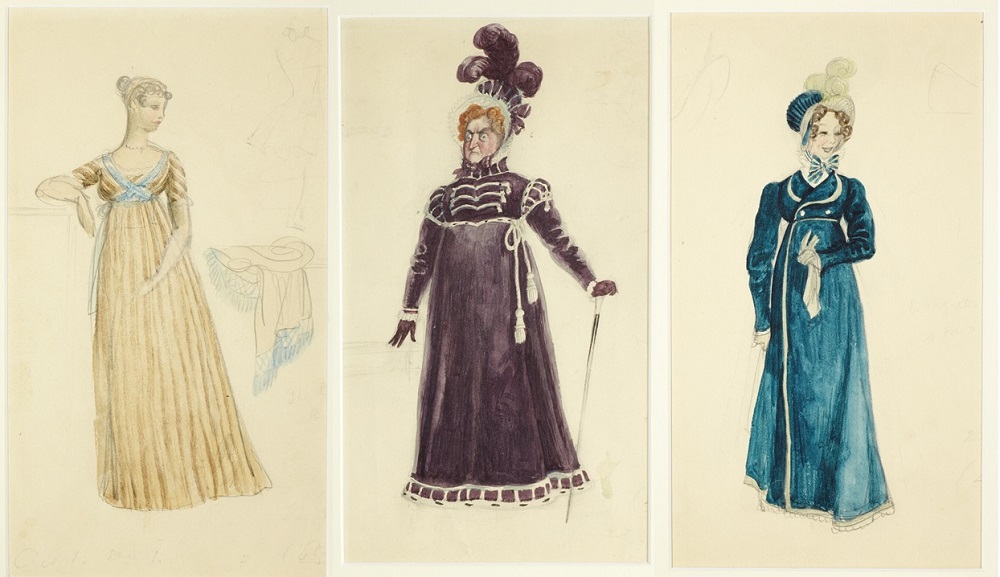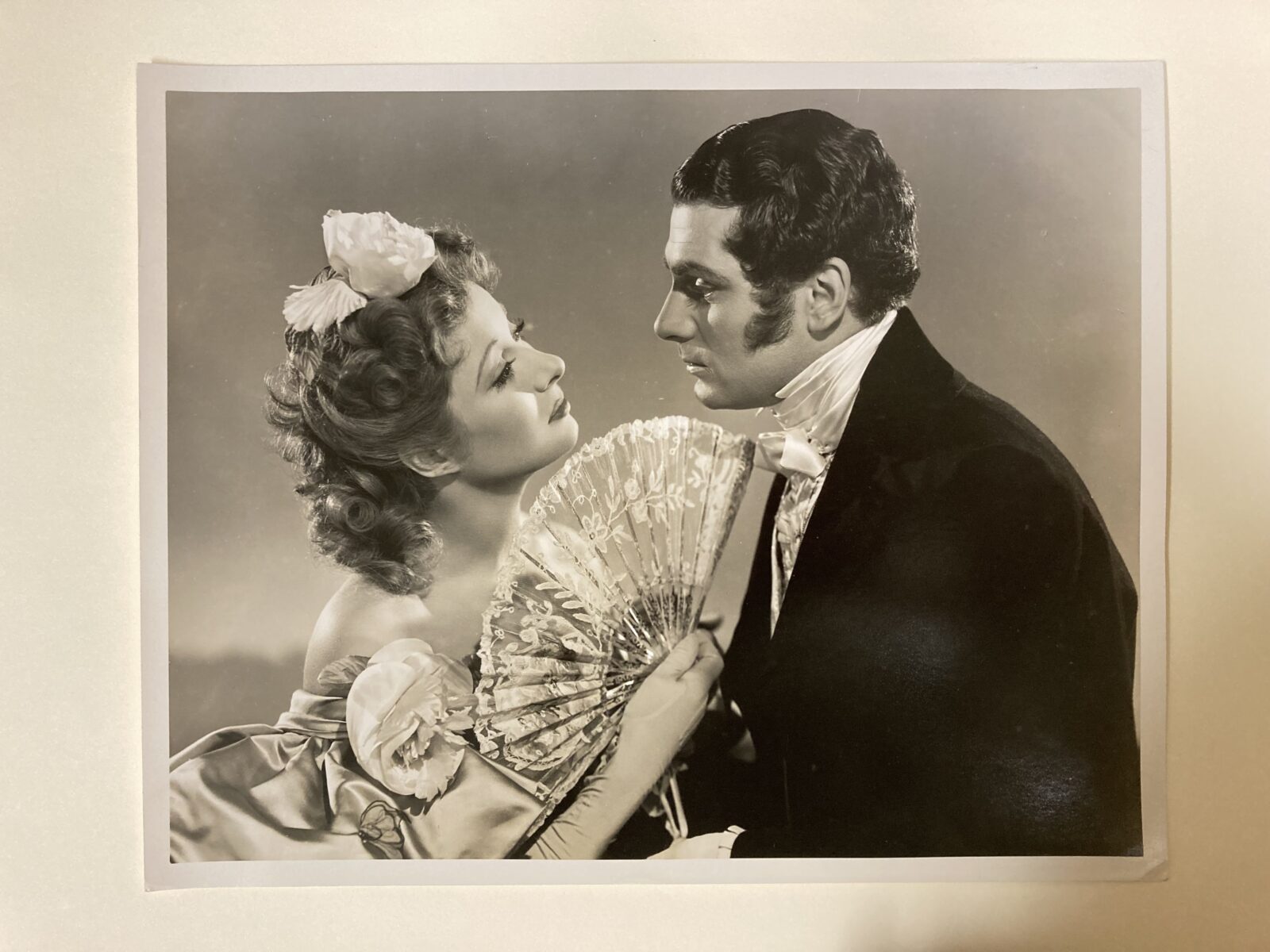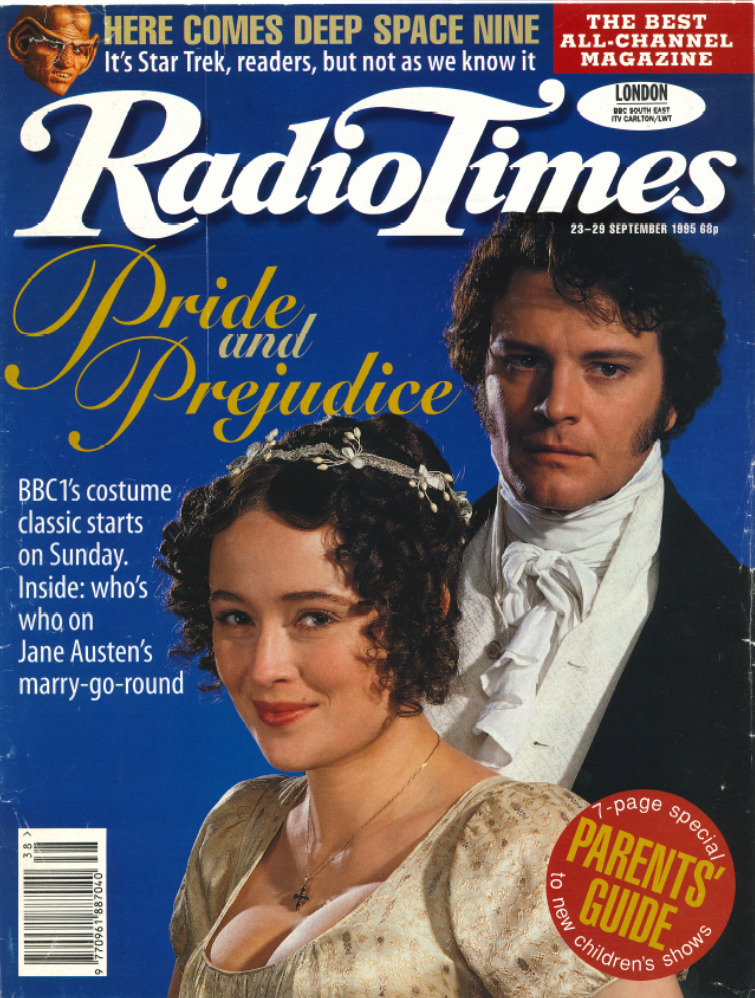Stage to Screen
OBJECTS:
First published stage adaptation:
Duologues and Scenes From the Novels of Jane Austen, arranged by Rosina Filippi
Published by J. M. Dent and Co, London. First edition, 1895
Amateur theatricals were all the rage in the 1890s, as they had been in Jane Austen’s youth. This collection of duologues for the stage was specifically aimed at women, with a wealth of strong female parts (12 female parts to only 4 male), and a concentration on scenes in which female characters are at their most direct and rebellious.
Duologues tapped into the era’s burgeoning New Woman movement, presenting scenes and characters that emphasised and celebrated female domestic protest. With some characters getting to make wry asides to the audience, the format was also broadly funny. Duologues certainly did not focus on romance.
Duologues was hugely popular, running to three editions. Dozens more dramatic adaptations of Austen followed. As the twentieth century opened, many people were just as likely to encounter Austen onstage as in a book.
First big budget theatrical production:
Pride and Prejudice, A Sentimental Comedy, by Helen Jerome
Published by Doubleday, Doran & Co, New York. First edition, 1935
The first big-budget theatrical version of Pride and Prejudice was Helen Jerome’s sparky adaptation, which enjoyed successful runs on Broadway in 1935 and in London’s West End the following year before going on tour. It is estimated to have been seen by a million people worldwide and was described in the publicity for MGM’s 1940 film of Pride and Prejudice (which it directly influenced) as ‘One of the most famous plays’.
Jerome’s adaptation was highly influential, putting more focus on Mr Darcy than the original novel and previous adaptations had done, and turning him into the sexy heartthrob we know today.
The play subdued Austen’s exploration of female independence, turning Lizzy into a weepy heroine, who frequently trembles and cries, and who declares to Darcy after his second proposal ‘I am abased’.
Darcy, on the other hand, is empowered. His passion for Elizabeth is apparent throughout, and he is even given the last line of the play, declaring: ‘My cruel . . . my kind . . . oh, my lovely Elizabeth!’
Although Jerome’s version of a weakened Elizabeth has not survived in contemporary depictions of the character, her portrayal of a sexy Darcy as a second central character persists to this day.
Costume designs for Pride and Prejudice, by Rex Whistler, 1937
The first big-budget stage adaptation of Pride and Prejudice was Pride and Prejudice: A Sentimental Comedy in Three Acts, by Helen Jerome. After a successful run on Broadway in 1935 it transferred to the St. James Theatre in London in 1936 with a new British cast featuring Celia Johnson as Elizabeth Bennet, a rising star who later made her name in the film Brief Encounter.
The UK production also featured new sets and costumes designed by Rex Whistler, one of the most dazzling and diverse artists of the inter-war period. His costume designs for Pride and Prejudice show his light touch, elegance and sense of humour.
A contemporary review described the production as ‘the happy recapture of the graceful days of the Regency’ which perhaps explains why it was produced at this time – in the aftermath of the First World War, the UK was in need of the escapism and comfort, beauty and reassurance that is found in Jane Austen’s works.
First film:
Pride and Prejudice by Metro-Goldwyn-Mayer, 1940
Original studio photograph by Clarence Bull
‘Five charming sisters on the gayest, merriest manhunt that ever snared a bewildered bachelor! Girls! Take a lesson from these husband hunters!’
MGM Film Promotion
Jane Austen first made it to Hollywood in 1940 when MGM’s lavish adaptation of Pride and Prejudice, starring Laurence Olivier and Greer Garson, opened in cinemas.
The screenplay, written by Aldous Huxley and Jane Murfin, was specifically adapted from the stage adaptation by Helen Jerome as well as Jane Austen’s novel. Laurence Olivier’s performance cemented the idea that Darcy was a sex symbol. For many viewers he epitomised Mr Darcy right up until 1995, when Colin Firth took on the role for the BBC.
The film received both high praise and disparaging criticism. The New York Times praised it as ‘the most deliciously pert comedy of old manners, the most crisp and crackling satire in costume that we in this corner can remember ever having seen on the screen’, whilst others derided its extraordinary costumes and divergences from Jane Austen’s lines and plot.
Austen-mania:
BBC adaptation of Pride and Prejudice, 1995
Radio Times, 23-29 September 1995
Andrew Davies’s sumptuous adaptation of Pride and Prejudice for the BBC burst onto British TV screens in September 1995, to critical acclaim and huge popularity. The six-part drama was screened weekly, attracting huge audiences. The press called it ‘Austen-mania’. 100,000 video box sets were sold while the show was still on air, and 10 million people tuned in to watch the final episode.
Jennifer Ehle’s portrayal of Elizabeth Bennet, the darling of English literature, was applauded, but it was Colin Firth’s portrayal of Mr Darcy that caught the public imagination. The scene in which he emerges from a lake in a wet shirt has become one of the most iconic moments in British TV history – despite it not appearing in the novel.
